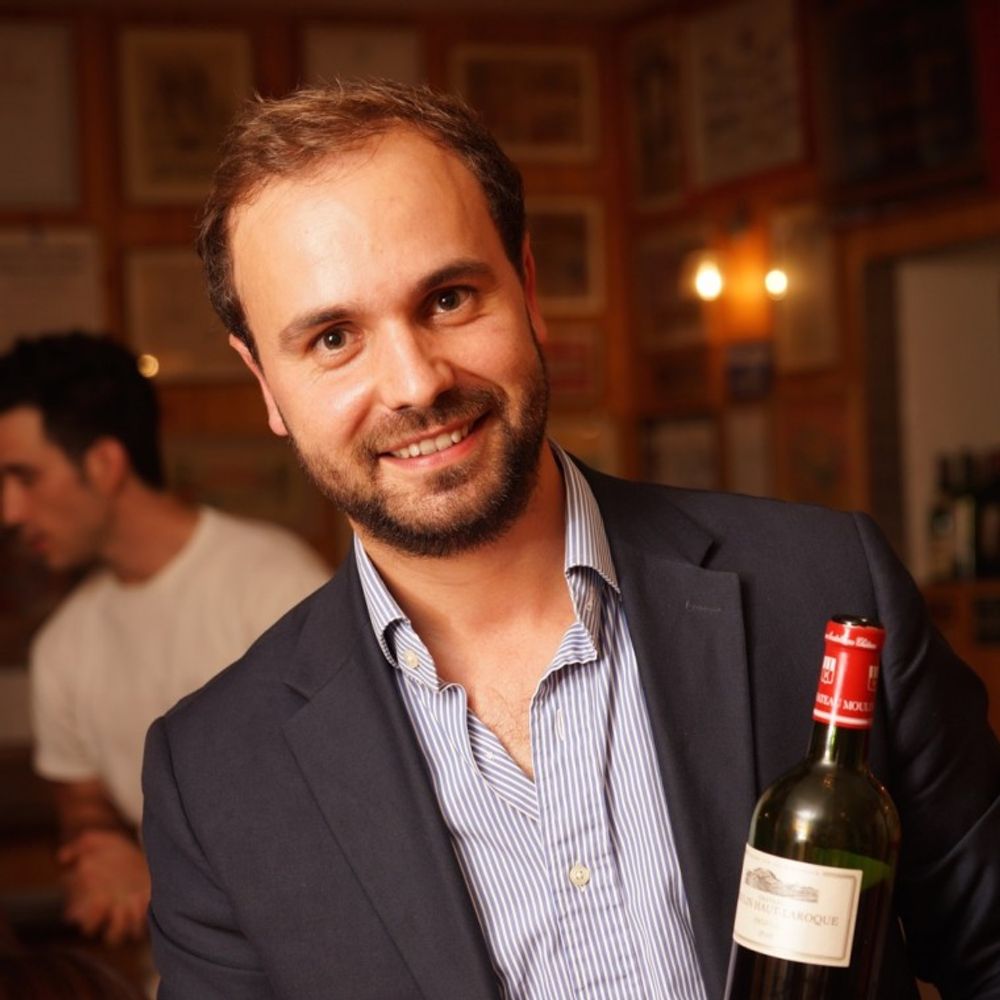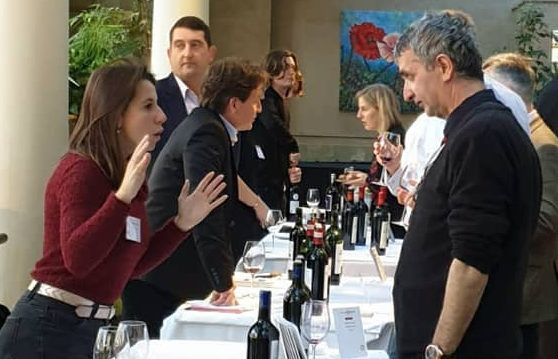At Saint-Emilion estate Château de Pressac winemaker Jean-Francois Quenin declared 2019 to be his best vintage in 23 years of ownership, writes Dean.
Amid so much global gloom and doom, it is heartening to report some encouraging news from the Grand Circle des Vins de Bordeaux’s annual mid-March tasting in central London. A healthy number of hardy Bordelais made the trip over the Channel to show the 2019 vintage to the trade, and while it is not going to be regarded as an exceptional year, some very good red and white wines were in evidence.

Geoffrey Dean gets the lowdown on Bordeaux 2019 from Alain Raynaud, London, March 12, 2020
Alain Raynaud, who founded Grand Cercle in 2001 and has been president ever since, gave a frank overview of the wines made by the 150 châteaux from 26 appellations that are its members.
“2019 is a good vintage but not a great one,” he told The Buyer. “I would say that a third to a half of the properties made very good wines. There were some very good whites. The Right Bank is showing better in my opinion due to the fact the Merlot could be picked earlier than the Cabernet Sauvignon. In a lot of places, we had 125mm of rain from the second week of October till the end of the month. So we had to pick the Cabernet very quickly. There was no disease or botrytis, but the very hot summer led to some high pHs. Therefore many had to add acid to the reds – typically 1g/l of tartaric.”
Yields were, according to Raynaud, “a bit generous”, especially for those who opted against any green harvest. “So they had to make some saignee or increase concentration by reverse osmosis,” he added. “But that increases your alcohol. There was lots of sunshine, which led to thick skins and strong tannins.”
Certainly, the estate where Raynaud himself acts as consultant, Château Serilhan in Saint-Estèphe, produced a blend of startlingly dark colour and overt tannins (partly due to three days of cold soak). Long and extremely concentrated, this was an impressive wine, and with 50 hl/ha made, there should be plenty of it.
Another head-turner with notable colour but lower yield (40 hl/ha) was Château de la Dauphine. Widely distributed in the UK, this Fronsac estate, which farms its 53 hectares of vines organically, settled on a blend of 85% Merlot and 15% Cabernet Franc with 30% new oak. Fine, well-integrated tannins as well as lovely crunchy fruit and florality were hallmarks of this blend.

Thomas Hervé: “I think 2019 can be as good as 2018. It is rich, dense, powerful and fruity.”
Another Fronsac property that stood out was Château Moulin Haut-Laroque, whose vines have an average age of 55 years, with the Malbec (which made up 5% of the blend) having been planted just after the Great War. Owner-winemaker Thomas Hervé revealed that his vines received just 15mm of rain over the growing season, allowing him to pick in the first half of October. “The lack of rain meant we had low yields – under 30hl/ha – but small berries and good concentration,” said Herve, whose family have been making wine on the estate since the 18th century.
The same power and concentration was evident in the very pleasurable wines of two Saint-Emilion Châteaux, Grand Corbin-Despagne and La Marzelle, both of whom used around 75% Merlot and a quarter Cabernet Franc with a dash of Cabernet Sauvignon. Meanwhile at another Saint-Emilion estate, Jean-Francois Quenin, winemaker of Château de Pressac, declared 2019 his best vintage in 23 years of ownership. Made up of 70% Merlot, roughly equal amounts of the two Cabernets as well as a dash of Carmenere, his wine was blessed with freshness, beautifully integrated tannins and excellent intensity and length.
“I replanted the entire 36 hectares of wines when I bought the estate, and I think the vine age, combined with the very dry summer, is the key,” Quenin said. “I also vinify each plot separately in 40 different vats.”
For Pessac-Leognan producer, Ghislain Boutemy of Château Haut-Lagrange, 2019 was “definitely one of the best, although not the best” years. “It was a very good vintage because we had enough sun and rain for the best maturity for the whites, which have a very nice freshness,” he said. “Also, we picked the reds early for freshness and acidity to have good balance.” His Merlot was harvested in mid-September and his Cabernet Sauvignon by the end of the month before any rain came. Both his red and white wines showed very well. So too did those of Graves estate, Château de Cerons, whose white blend (which included 10% Sauvignon Gris) showed notable freshness and length.
In Margaux, Château La Tour de Bessan produced a delightfully elegant and harmonious wine which, unusually according to owner Marie-Laure Lurton, contained as much as 12% Petit Verdot due to its high quality. The balance was made up of 55% Cabernet Sauvignon and 33% Merlot. “It was a very good but not a great vintage,” she mused.
Further north in the Haut-Medoc, Château Lanessan settled on an almost identical assemblage to make an excellent wine. Estate manager, Paz Espejo, revealed yields were low at 35 hl/ha due to frost and some rot, but the floral character, beautiful balance and long finish of the blend made it especially appealing.
Perhaps the last word should go to Thomas Hervé. “Last year, Comte Stephan van Neipperg, who owns La Mondotte, told me he thought 2018 was the eighth best vintage of this century after 2000, 2003, 2005, 2009, 2010, 2015 and 2016. I think 2019 can be as good as 2018. It is rich, dense, powerful and fruity.”































